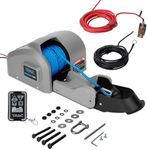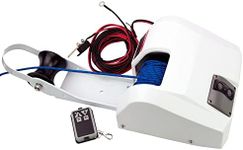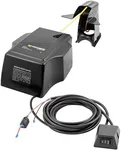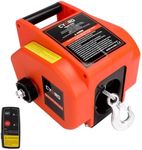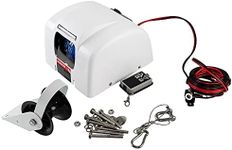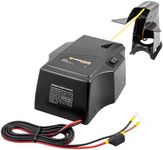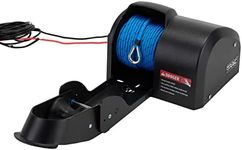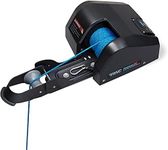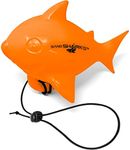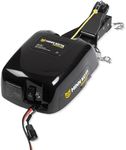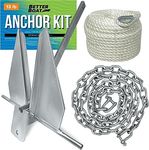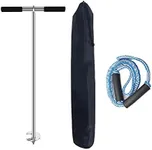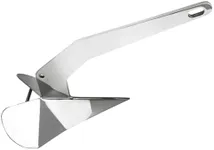Buying Guide for the Best Electric Boat Winches
Choosing the right electric boat winch is crucial for ensuring smooth and efficient operations on the water. Electric boat winches are used for anchoring, docking, and towing, and selecting the right one involves understanding various specifications that determine their performance and suitability for your needs. Here are the key specs to consider when picking an electric boat winch and how to navigate them.Load CapacityLoad capacity refers to the maximum weight the winch can handle. This is important because it determines whether the winch can safely and effectively manage the weight of your boat and any additional loads. Load capacities are typically divided into light-duty (up to 2,000 lbs), medium-duty (2,000-4,000 lbs), and heavy-duty (over 4,000 lbs). To pick the right load capacity, consider the weight of your boat and any additional equipment or cargo you may need to tow or anchor.
Line SpeedLine speed is the rate at which the winch can reel in or let out the line, usually measured in feet per minute. This spec is important for efficiency and time management during operations. Line speeds can range from slow (up to 10 feet per minute) to fast (over 20 feet per minute). If you need quick operations, such as in emergency situations or frequent docking, a faster line speed is preferable. For more leisurely or precise tasks, a slower line speed may be sufficient.
Power SourceThe power source of an electric boat winch can be either 12V or 24V, typically drawing power from the boat's battery. This spec is important because it affects the winch's compatibility with your boat's electrical system. 12V winches are common for smaller boats, while 24V winches are used for larger vessels with more powerful electrical systems. Choose a winch that matches your boat's battery voltage to ensure proper functionality and avoid electrical issues.
Cable LengthCable length refers to the length of the winch's cable or rope. This is important for determining how far you can anchor or tow your boat. Cable lengths can range from short (up to 50 feet) to long (over 100 feet). Consider the typical depth of water you operate in and the distance you need to cover when choosing the cable length. Longer cables provide more flexibility but may require more storage space and maintenance.
Material and DurabilityThe material and durability of the winch are crucial for its longevity and performance in marine environments. Winches are typically made from materials like stainless steel, aluminum, or synthetic composites, which offer varying levels of corrosion resistance and strength. Stainless steel is highly durable and resistant to rust, making it ideal for saltwater use. Aluminum is lightweight and resistant to corrosion but may not be as strong as stainless steel. Synthetic composites are lightweight and resistant to corrosion but may wear out faster. Choose a material that suits your boating environment and maintenance preferences.
Control OptionsControl options refer to how you operate the winch, such as through a wired remote, wireless remote, or manual switch. This spec is important for convenience and ease of use. Wired remotes offer reliable control but may limit mobility. Wireless remotes provide greater flexibility and ease of use but require battery maintenance. Manual switches are simple and reliable but may require physical effort. Consider your preference for convenience and control when choosing the right option.
